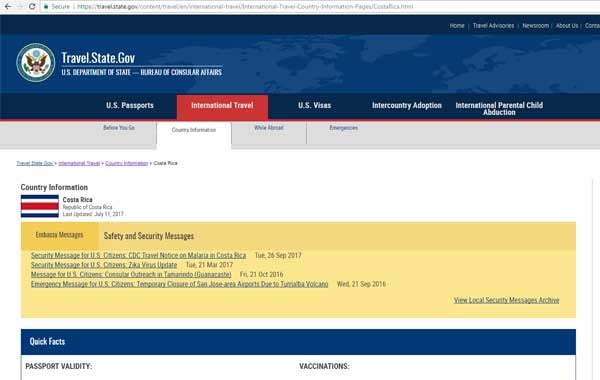Alert: US State Department Launches New Travel Warnings System
First announced last November, the US State Department followed through on its promise to revise the travel warnings and alert system. The new system uses four standard levels of warnings, with a description of the risks and steps U.S. citizens should take. Plus, this measure has been applied for each country in the world.
“Travel organizers should find this new system easier to understand,” stated Andrea Holbrook. “The information is presented more clearly and with more detailed definition of the risks within a country. For example, certain areas may be safe while overall a country is labeled yellow or orange.”

What are the new levels and what do they mean?
The Travel Advisory level appears at the top of each country page on the travel.state.gov website, with a color corresponding to Level 1-4:
-
Level 1 - Exercise Normal Precautions (blue color bar)
-
Level 2 - Exercise Increased Caution (yellow color bar)
-
Level 3 - Reconsider Travel (orange color bar)
-
Level 4 – Do Not Travel (red color bar)
Not only is there an overall Travel Advisory level for a country, warnings may vary for specific locations or areas within a country. For example, a country might have an overall Level 2 (“Exercise Increased Caution”), but a level 2 (“Reconsider Travel”) to a particular region within the country.
Additional information on Reason for Risk
If a country is rated higher than “Normal” (Level 1), the website lists specific “Risk Indicators,” clear reasons for the level assigned and advice to U.S. citizens who plan to travel there. There are seven risk indicators with a letter symbol next to the warning:
U – Civil Unrest
H – Health
N – Natural Disaster
C – Crime
T – Terrorism
E –Time-limited Event
O – Other
All Countries Re-Evaluated in New System
The Department of State communicated there was no direct translation between these new codes and prior alerts and warnings. For example, a country previously issued a travel alert under the old system will not necessarily earn a Level 3 rating under the new system. Each country was re-evaluated in light of the new system and re-classified accordingly.
“We are making it easier for you to access clear, timely, and reliable safety and security information about every country in the world,” states the website. The system is the responsibility of the Bureau of Consular Affairs within the Department of State. The site also provides an interactive map on each country page.
Difference between Alerts versus Warnings
Alerts are meant to be specific and short-term, generally issued in response to a specific event or threat. They will replace what was formerly issued as worldwide or regional cautions. Alerts appear at the top of the travel.state.gov webpage. Examples of reasons for issuing a Travel Alert might include strikes during an election season, disturbances, a health alert like an outbreak of H1N1, or evidence of an elevated risk of terrorist attacks. When the short-term events is over, the Travel Alert will be cancelled.
Travel Warnings are issued for a longer term, with the purpose of advising travelers to carefully consider whether to go to a country at all. Examples of reasons for issuing a Travel Warning might include unstable government, civil war, ongoing intense crime or violence, or frequent terrorist attacks. The Travel Warning level remains in place until the situation changes; some have been in effect for years.
The new Warning Levels System change follows updates made to the website early last month to be mobile-friendly with simplified navigation.
To learn more, visit the travel.state.gov website: LIVE! Improved Consular Safety and Security Messaging.



